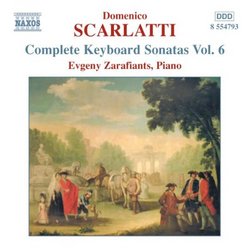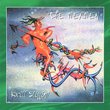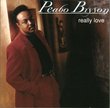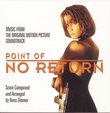| All Artists: Domenico Scarlatti, Evgeny Zarafiants Title: Domenico Scarlatti: Complete Keyboard Sonatas, Vol. 6 Members Wishing: 1 Total Copies: 0 Label: Naxos Release Date: 11/18/2003 Genre: Classical Styles: Chamber Music, Forms & Genres, Sonatas, Historical Periods, Baroque (c.1600-1750), Classical (c.1770-1830) Number of Discs: 1 SwapaCD Credits: 1 UPC: 636943479322 |
Search - Domenico Scarlatti, Evgeny Zarafiants :: Domenico Scarlatti: Complete Keyboard Sonatas, Vol. 6
 | Domenico Scarlatti, Evgeny Zarafiants Domenico Scarlatti: Complete Keyboard Sonatas, Vol. 6 Genre: Classical
The son of Alessandro Scarlatti, who created a new school of opera in Naples, Domenico Scarlatti is particularly renowned for his remarkable keyboard sonatas, of which some 555 are known. This significant addition to early... more » |
Larger Image |
CD DetailsSynopsis
Album Description The son of Alessandro Scarlatti, who created a new school of opera in Naples, Domenico Scarlatti is particularly renowned for his remarkable keyboard sonatas, of which some 555 are known. This significant addition to early 18th century keyboard repertoire was written for performance on the various keyboard instruments of the Spanish court, where Scarlatti was employed for many years. In all their variety the sonatas have long provided a valuable repertoire for pianists. Similar CDs
|
CD ReviewsPoetic Scarlatti J Scott Morrison | Middlebury VT, USA | 11/19/2003 (5 out of 5 stars) "I will yield to no one in my admiration for Scarlatti's piano sonatas (he modestly called them 'Essercizi' ['Exercises']), have played many of them at the piano, and have many, many recordings of them, including the complete set done by harpsichordist Scott Ross, before his too-early death. Naxos is slowly issuing a series that will eventually comprise all 555 sonatas, and each issue features a different pianist. Evgeny Zarafiants is a pianist previously unknown to me. I see that he has previously made a couple of CDs of Scriabin préludes, but I've not heard them. On the basis of this issue, though, I'd guess that his Scriabin would be good. I say that because this is pretty romantic-sounding Scarlatti. I'm no purist in these matters, though--if I were, I'd insist the sonatas be played only on harpsichord--and after my initial mild shock at the approach, I came to really enjoy these performances. Just listen, for instance, to the Sonata in D, K. 478. It is one of the slow ones--this performance takes over eleven minutes!--and has always, I will admit, been just a little bit boring for me. In Zarafiants' hands it becomes a musing but intense cavatina which I have returned to at least ten times since I got the CD. It is a mesmerizing performance, like that of a great actor doing a Shakespearean soliloquy. Within the fairly narrow range of soft dynamics, he shapes the sonata's melodic phrases as a great bel canto singer might. And thus this sonata becomes a gently pulsing aria of melancholy and resignation.For many people it is Scarlatti's quick, virtuosic sonatas that are most attractive, with their pearly runs, Spanish or Italian rhythms, crisp repeated notes and tricky cross-hand passages. Mr Zarafiants' talents don't let us down here, either. In the Sonata in C, K. 502, for instance, there is fire and humor. In this sonata Scarlatti uses one of his characteristic devices, quick switches between 3/8 and 2/4; these are pointed up wittily by Mr Zarafiants. Delicious.The sonatas on this disc are, by and large, not the most familiar ones, although the canonic Sonata in F major, K. 274, the virtuosic Sonata in F Sharp Minor, K. 318, and the quietly sad Sonata in C Sharp Minor, K. 247, are here. This mix makes for a constantly engaging, and sometimes surprising, disc.Good work, Evgeny Zarafiants. I want more!Sound, as one comes to expect from Naxos' piano recordings, is exemplary, as are the very helpful notes by Keith Anderson.TT=77:32Scott Morrison" Sylph-like Scarlatti. John Austin | Kangaroo Ground, Australia | 12/17/2003 (4 out of 5 stars) "What a variety of approaches keyboard players bring to the performing of Scarlatti`s sonatas! A bonfire or a fireworks display might typify some of them (including those of several famous harpsichordists). Russian pianist Evgeny Zarafiants favors a more sylph-like, languid approach. K 419 in F sounds droopy here, and the fine gossamer of K 112 in Bb floats loosely. Repeats are observed, according to the policy adopted for this on-going complete Naxos series. K 478, one of the few Scarlatti's sonatas marked "andante e cantabile", thus extends for more than eleven minutes as played here. K502 in C is made to sound more robust than other sontas in this selection. Has anyone noticed how the first half of this sonata seems to borrow themes from Handel's "Water Music"? Zarafiants' Scarlatti recital might not be my favorite in this Naxos series so far, but it is a well-filled CD and contains some less familiar items." Evgeny Zarafiants Plays Scarlatti Sonatas Robin Friedman | Washington, D.C. United States | 04/21/2005 (5 out of 5 stars) "In their gaiety, lyricism, lightness, and eccentricity, the 550-odd keyboard sonatas of Domenico Scarlatti (1685-1757) are among the joys of music. Scarlatti composed them during his old age while in the service of the royal family of Spain and Portugal.
There have been complete recordings of the sonatas on the harpsichord (by Scott Ross and Fernando Valenti), but this CD is part of a project on the Naxos label to record the sonatas in their entirety for the piano. (I don't think there is an earlier complete set of the sonatas on the piano.) Each CD is performed by a different pianist, and each sells at a budget price. The series will probably be of most interest to those listeners who already know Scarlatti and want to explore his music in detail. This CD volume 6 in the Naxos series is performed by the Russian pianist, Evgeny Zarafiants. I wasn't familiar with Mr. Zarafiants before, but I know he has recorded works by Scriabin for Naxos. The disk includes 16 sonatas of widely varying types such as long, slow lyrical sonatas, (the sonata in D major, K.478), and lively, short virtuosic pieces (the sonata in F sharp minor, K.67 and the sonata in B flat major, K. 112.) The CD exemplifies many aspects of Scarlatti's art: the trills and ornamentation, the repeated notes, dance-like melodies, guitar-like strumming, showy passages played cross-handed, sudden changes of mood, and much more. It is valuable to follow the Naxos series and to hear the manner in which different performers interpret Scarlatti. Zarafiants's readings make use of the full characteristics of the piano; he makes no attempt at imitating the musical idiom of the harpsichord. Thus, he plays with full tone and use of the pedal and with great dynamic variety. He plays with a marked stacatto in those sonatas with repeated notes and with a much softer, lyrical touch in the longer, meditative works. He changes tempos frequently within a single work and changes moods and styles effectively. He plays with imagination and versatility. It is an effective way to hear Scarlatti on the piano. Some of the works on this CD I particularly enjoyed are the opening sonata in E major, K. 135, a quirky work with many changes in moods and dynamics and with trills, the sonata in C major, K.502, a broad work full of octaves and trills, the sonata in F major, K.419, a light,lyrical work which works down from the upper register of the instrument, and the sonata in E flat major, K. 123, a virtuosic piece with a loud opening followed by runs and ornaments with contrasting legato and stacatto passages. This is the sort of disk in which I found different works that appealed at each hearing. Music-lovers who want to explore Scarlatti's sonatas in detail (and who are comfortable hearing these works on the piano) will enjoy this CD and its companions in the Naxos series." |

 Track Listings (16) - Disc #1
Track Listings (16) - Disc #1



